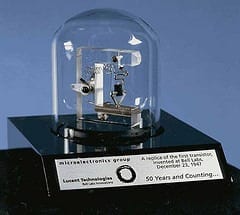
Repairing a damaged surface with this method would require significantly smaller amounts of material
In the super-small world of nanostructures, a team of polymer scientists and engineers at the University of Massachusetts Amherst have discovered how to make nano-scale repairs to a damaged surface equivalent to spot-filling a scratched car fender rather than re-surfacing the entire part. The work builds on a theoretical prediction by chemical engineer and co-author Anna Balazs at the University of Pittsburgh.
Their discovery is reported this week in the current issue of Nature Nanotechnology. The new technique has many practical implications, especially that repairing a damaged surface with this method would require significantly smaller amounts of material, avoiding the need to coat entire surfaces when only a tiny fraction is cracked, says team leader and UMass Amherst polymer scientist Todd Emrick.
“This is particularly important because even small fractures can then lead to structural failure but our technique provides a strong and effective repair. The need for rapid, efficient coating and repair mechanisms is pervasive today in everything from airplane wings to microelectronic materials to biological implant devices,” he adds.
At nano-scale, damaged areas typically possess characteristics quite distinct from their undamaged surrounding surface, including different topography, wetting characteristics, roughness and even chemical functionality, Emrick explains. He adds, “Anna Balazs predicted, using computer simulation, that if nanoparticles were held in a certain type of microcapsule, they would probe a surface and release nanoparticles into certain specific regions of that surface,” effectively allowing a spot-repair.
This vision of capsules probing and releasing their contents in a smart, triggered fashion, known as “repair-and-go,” is characteristic of biological process, such as in white blood cells, Emrick adds.
He says the experimental work to support the concept required insight into the chemistry, physics and mechanical aspects of materials encapsulation and controlled release, and was achieved by collaboration among three polymer materials laboratories at UMass Amherst, led by Alfred Crosby, Thomas Russell and himself.
The researchers show how using a polymer surfactant stabilizes oil droplets in water (in emulsion droplets or capsules), encapsulating nanoparticles efficiently, but in a manner where they can be released when desired, since the capsule wall is very thin.
“We then found that the nanoparticle-containing capsules roll or glide over damaged substrates, and very selectively deposit their nanoparticle contents into the damaged (cracked) regions. Because the nanoparticles we use are fluorescent, their localization in the cracked regions is clearly evident, as is the selectivity of their localization.”
Using rapid and selective deposition of sensor material in damaged regions, their innovative work also provides a precise method for detecting damaged substrates, he stresses. Finally, the new encapsulation techniques allow delivery of hydrophobic objects in a water-based system, further precluding the need for organic solvents in industrial processes that are dis-advantageous from an environmental standpoint.
Read more . . .
Bookmark this page for “nanotech materials” and check back regularly as these articles update on a frequent basis. The view is set to “news”. Try clicking on “video” and “2” for more articles.








